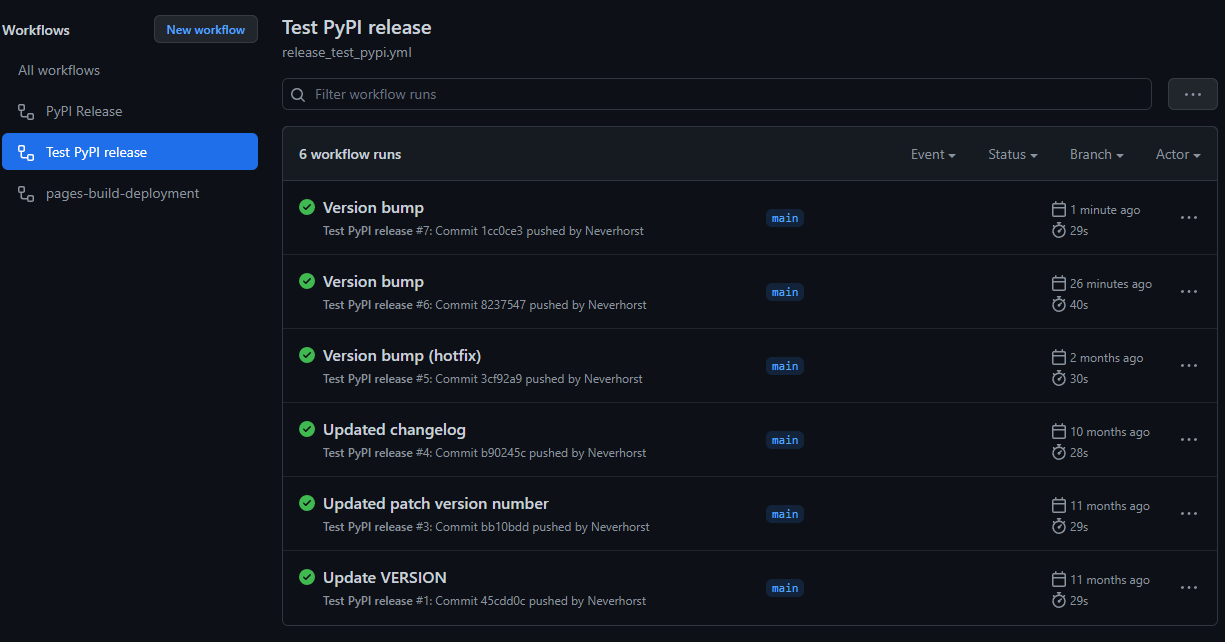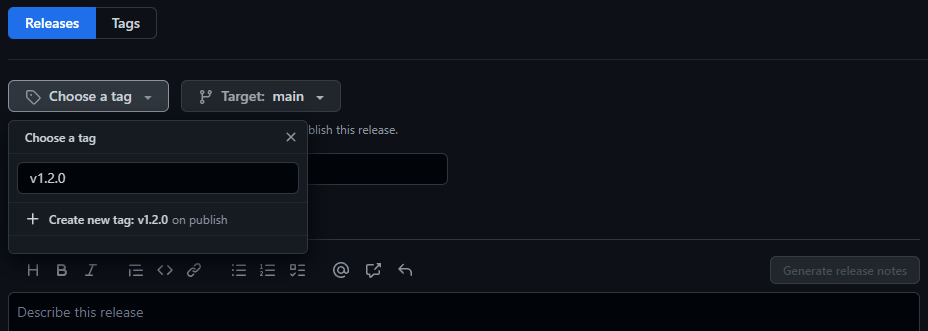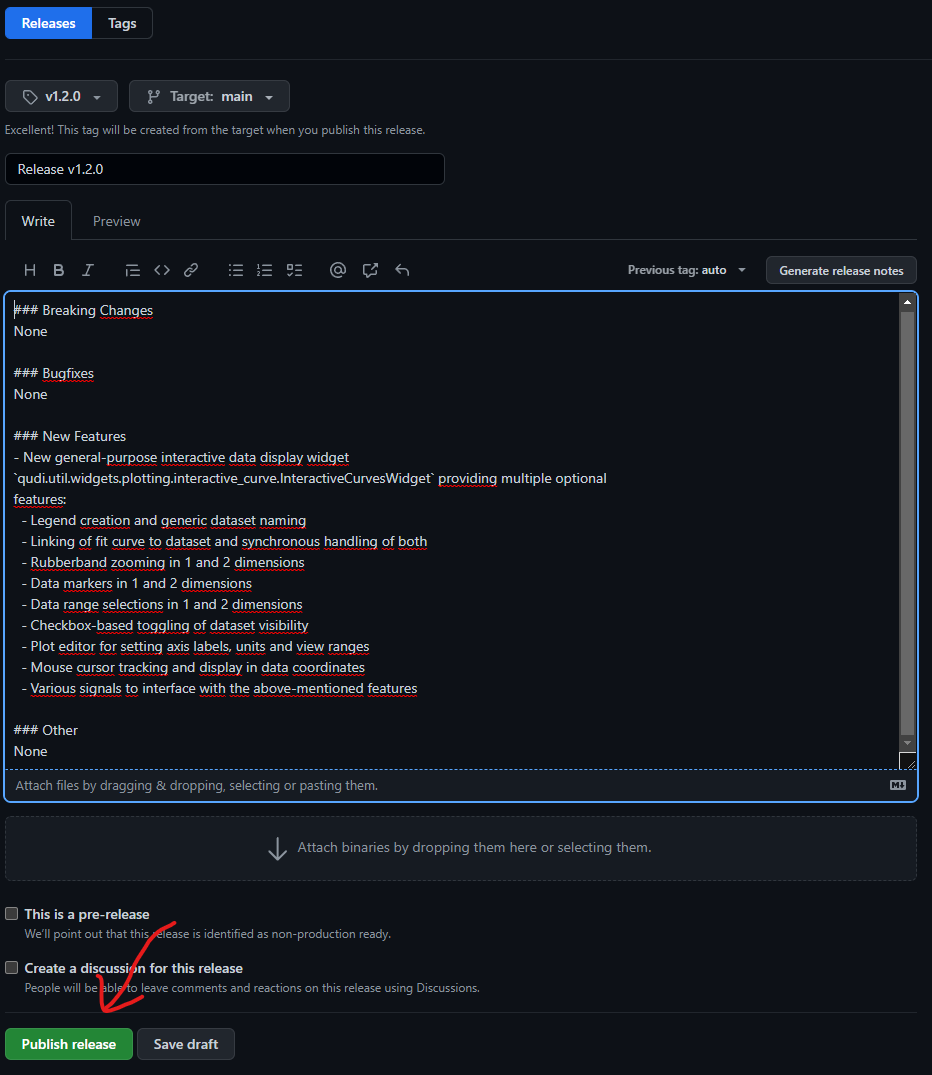layout: default title: qudi-core
How to create a new qudi-core release
1. Version bump
Create a single commit that includes three changes:
- Update version number in file
/Version. The scheme isMajor.Minor.Hotfix. - Rename "Pre-Release" section in
/docs/changelog.mdto "Version x.y.z" and add release date below. Create new empty "Pre-Release" template (subsections) at the top of the file. The head of the file should look like this:# Changelog ## Pre-Release ### Breaking Changes None ### Bugfixes None ### New Features None ### Other None ## Version x.y.z Released on DD.MM.YYYY ... - Add the version to be released to
/.github/ISSUE_TEMPLATE/bug_report.ymlunder the body item withid: version. Insert the new release version as new item in the dropdown item just belowDevelopmentand above the newest previous release version:name: Bug Report description: File a new bug report title: "[Bug] " labels: ["bug"] body: - type: markdown attributes: value: | Please fill out this bug report form as thorough as possible! Thank you for taking the time. - type: dropdown id: version attributes: label: Version description: What version of our software are you running? options: - Development - Release vX.Y.Z <---------------------------------------------- HERE!!! - Release v1.1.0 - Release v1.0.1 - Release v1.0.0 validations: required: true - type: textarea ...
Push these changes to main via release PR.
2. Wait for PyPI test release to be successful
Check the GitHub Actions status for a successful PyPI test server release. This is not the actual PyPI release but just a test run to identify problems before the actual release.
If this test run fails, you need to fix the issue before commencing with the release!

3. Create new release with tag on GitHub
- Go to https://github.com/Ulm-IQO/qudi-core/releases and click on "Draft a new release":

- Create a new release tag with the naming convention according to the version number to be
released
vX.Y.Z. Click on+ Create new tag: ... on publishand make sure the Target is set tomain.
- Set name for the release to
Release vX.Y.Zwith respective version number inserted. - Copy over the section of
/docs/changelog.mdcorresponding to the release and insert it in the release description field. Remove the section header, i.e. theVersion vX.Y.Zpart. - Now your release form should look like the screenshot below. If you are satisfied, click
Publish releaseat the bottom of the form.
4. Wait for GitHub Actions to publish the release on PyPI
Congratulations! You have successfully published a release of qudi-core on GitHub and PyPI.